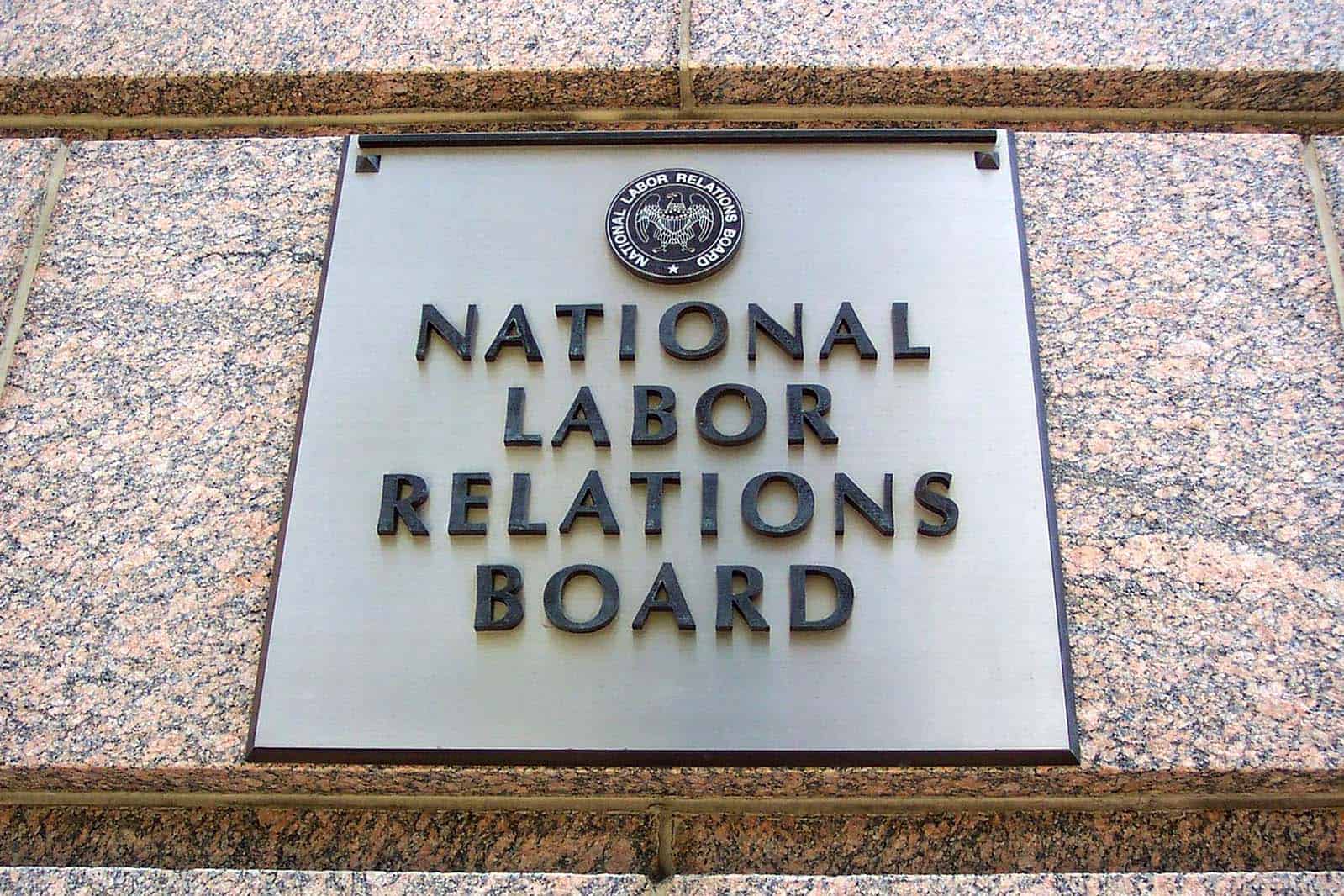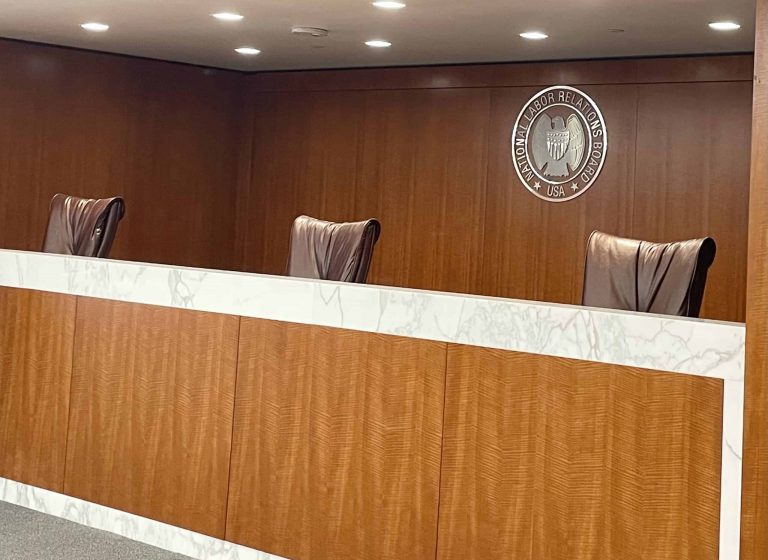Sachin S. Pandya is Professor of Law at the University of Connecticut. He researches the law of work, torts, and discrimination in the United States. Before law teaching, he clerked for the Honorable Jon O. Newman, U.S. Court of Appeals for the Second Circuit, and served as an appellate and civil rights attorney in the Office of the New York State Attorney General.

Kate Griffith is the Mckelvey-Grant Professor at the Cornell ILR School.
Andrew Elmore is an associate professor of law at the University of Miami School of Law.
Coming soon: The return of the fight over joint-employer doctrine. Earlier this year, the National Labor Relations Board announced that it plans to amend the current joint-employer rule that a Trump-era NLRB adopted to supplant a broader legal standard. Good. NLRA joint-employer doctrine needs a serious reboot. Here, we offer an idea: Add industry-specific rebuttable presumptions of joint-employer status to supplement whatever general joint-employer legal standard the Board adopts.
To begin, imagine an easy-ish (and thus very hypothetical) case: a company hires a person (individual or organization) to operate one of the company’s stores — fast-casual burger restaurants. As a condition for operating the store, the company provides the operator with a take-it-or-leave-it agreement: You (the operator) can’t operate any other competing business. You can’t hire any employee who has worked for any other of the company’s stores. The company can direct you to fire specific employees. The company gives you a book of instructions about how to operate the store. And the operating agreement provides that the company can terminate the agreement if it finds, in its sole discretion, that you have not complied with any of those instructions.
On these facts, although the operator is the nominal employer of that store’s employees, there’s enough to find that the company likely has enough control over those employees to also count as their “employer” as defined under NLRA section 2(2), i.e., to qualify as a joint employer. After all, the company has the right to control who the operator hires and fires. And it effectively controls those workers if that operator owns no other businesses, because it can terminate the operating agreement at will.
The problem: For the not-so-easy cases, the law is a mess. Joint-employer doctrine requires deciding the “control” question by applying a “totality of the relevant facts” standard plus supposed guides via factors borrowed in part from the common law of agency. We’re told what those factors are but not how much relative weight each factor gets. In part, that’s because while the legal standard applies across occupations and industries, each factor’s probative value actually varies a lot by occupational and industry practice. What tells you a lot about a person’s nature and degree of “control” over delivery drivers may not tell you as much about it for software engineers. The result: Litigation about joint-employer status is uncertain, expensive, and fact-intensive. And it leads to confusing and inconsistent rulings that are poor guides for workers, companies, and regulators alike for what’ll happen in the next case. (For details, see, e.g., here and here.)
So, here’s the idea. Supplement a general joint-employer rule with rebuttable presumptions tailored to the conditions and practices in particular industries. Remember that a legal presumption does not supplant a substantive legal standard. Rather, a presumption is just a legal rule that, if one party in litigation proves that a given fact is true (the proven fact), the factfinder must act as if another fact (the presumed fact) is proven true, unless another party produces enough evidence to the contrary (thus “rebutting” the presumption). Legal presumptions usually affect who bears the burden of producing evidence of a material fact, not the burden of persuasion. To justify a presumption, you just need to show that the “proven fact” — the fact triggering the presumption — and the presumed fact are rationally connected. Put another way, it’s rational to take the “proven fact,” if true, as a red signal flare for the presumed fact, because in the run of cases to which the presumption applies, the presumed fact is likely true, given the proven fact.
To illustrate, suppose you rationally believe that the requisite control for joint-employer status is more likely than not to be true when a company is part of the industry in the example above and, say, requires non-solicitation clauses. If so, you could justify an industry-specific legal presumption to that effect. Then, in the above example, the party trying to hold the company responsible for an NLRA unfair-labor-practice (or its duty to bargain) can opt to trigger that presumption by proving just that the company’s agreement with the operator contains a non-solicitation clause. If it does, the burden shifts to the company to prove that it doesn’t have enough control over the operator (regardless of that clause) to count as a joint employer. In effect, the company gets to show enough to believe that, in its particular case, the presumption’s signal flare might be a false positive. If it can’t meet that burden, end of story. If it can, the presumption doesn’t matter, but there may now be more evidence on the table as a result. Meanwhile, the NLRB, unions, and firms can now all spot likely joint-employers depending on how easily each can find the presumption’s triggering fact — its red signal flare — in the night sky.
For the NLRB, it’s nothing new to adopt rebuttable presumptions when deciding cases. For some examples upheld as rational by the courts, see here and here. The NLRB can also adopt presumptions by regulation, because the 74th Congress in 1935 authorized it to make “such rules and regulations as may be necessary to carry out the provisions of” the NLRA, with the 80th Congress in 1947 adding only that the NLRB do it “in the manner” the Administrative Procedure Act prescribes. Sure, the U.S. Supreme Court recently minted a clear-statement rule for reading statutes authorizing administrative agency action if that action seems to judges like an “extraordinary,” “extravagant,” or “highly consequential” exercise of power. But this vague clear-statement rule, as applied here, faces off against all the other rules for reading statutes, past judicial deference to the NLRB’s primary responsibility for developing national labor policy, and the fact that the NLRB has been ordinarily deciding who counts as a NLRA joint-employer for over 80 years.
Now, a word of caution. To design it well, an industry-specific presumption requires knowing a lot about an industry’s actual practices — not just what they write in their contracts, but how they structure their business and labor arrangements overall. Coffee shops and construction sites and commercial cleaning firms are different in ways that matter. That’s true whether you adopt such a presumption by adjudication or regulation. Such presumptions also require updating when industry practices change. And this approach — like any other — can’t overcome judges driven primarily by political-party loyalty and their own ideological preferences. In short, this approach isn’t a magic bullet. But if it can make joint-employer doctrine modestly less uncertain and more coherent in the next go-around, it’s worth taking seriously now.









Daily News & Commentary
Start your day with our roundup of the latest labor developments. See all
July 11
Regional director orders election without Board quorum; 9th Circuit pauses injunction on Executive Order; Driverless car legislation in Massachusetts
July 10
Wisconsin Supreme Court holds UW Health nurses are not covered by Wisconsin’s Labor Peace Act; a district judge denies the request to stay an injunction pending appeal; the NFLPA appeals an arbitration decision.
July 9
the Supreme Court allows Trump to proceed with mass firings; Secretary of Agriculture suggests Medicaid recipients replace deported migrant farmworkers; DHS ends TPS for Nicaragua and Honduras
July 8
In today’s news and commentary, Apple wins at the Fifth Circuit against the NLRB, Florida enacts a noncompete-friendly law, and complications with the No Tax on Tips in the Big Beautiful Bill. Apple won an appeal overturning a National Labor Relations Board (NLRB) decision that the company violated labor law by coercively questioning an employee […]
July 7
LA economy deals with fallout from ICE raids; a new appeal challenges the NCAA antitrust settlement; and the EPA places dissenting employees on leave.
July 6
Municipal workers in Philadelphia continue to strike; Zohran Mamdani collects union endorsements; UFCW grocery workers in California and Colorado reach tentative agreements.